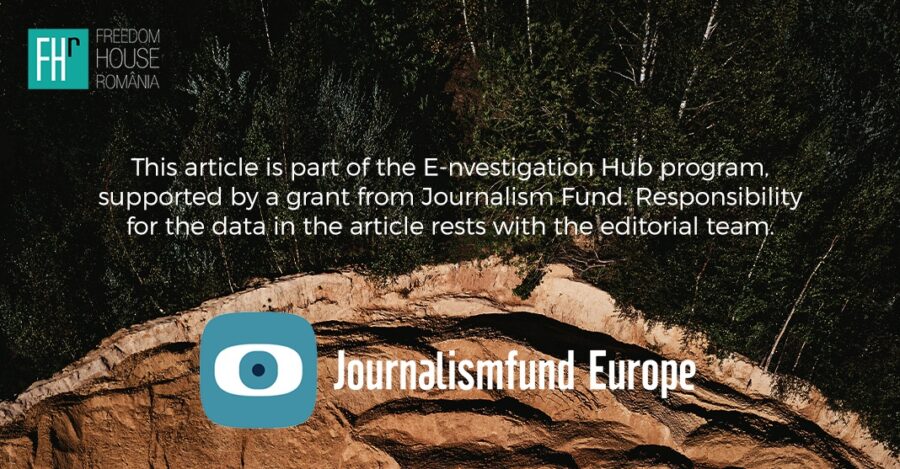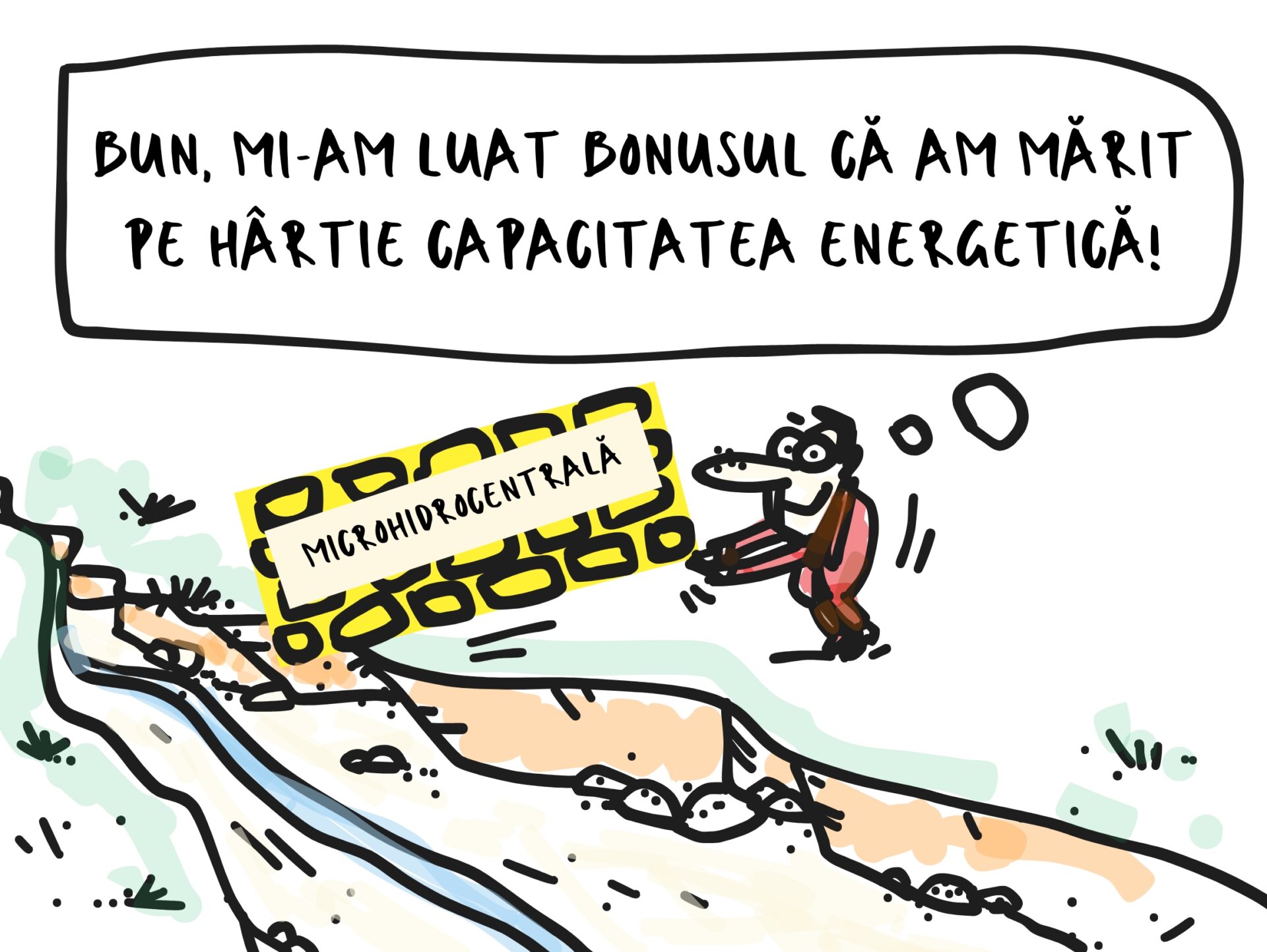Perhaps the most contested green energy currently produced in Romania is that of micro-hydropower plants (MHCs) placed on rivers and streams. Environmental organizations argue that these constructions even lead to the drying up of watercourses. Moreover, some are located in protected areas.
In 2015, the European Commission sided with environmental organizations in the case of four micro-hydropower projects. Since then, Romania has been in a state of infringement.
The state itself supports the construction of these micro-dams because state representatives have a different stake. They want to increase the production capacity of Hidroelectrica on paper to receive funds from the European Commission for green investments.
For this reason, the Government issued a legislative exemption in 2022, allowing Hidroelectrica to build nine micro-hydropower plants in protected areas, as these projects were deemed of strategic importance.
When it comes to the energy utility of these plants, the results are not impressive. All MHCs have a capacity of 0.8 TWh/year, about 1.4% of the production in 2023. In reality, data from the Ministry of Energy reveals that micro-hydropower plants have never produced more than 0.3% of the country’s energy needs.
(Contributors to the article: Adrian Anton and Monica Zanet, graphics)
Let’s begin
In 2015, local councilors in Iași voted to allocate €15.9 million for the development of the Bahlui River, which flows through several districts of the city. The project also included the construction of a dam with a micro-hydropower plant.
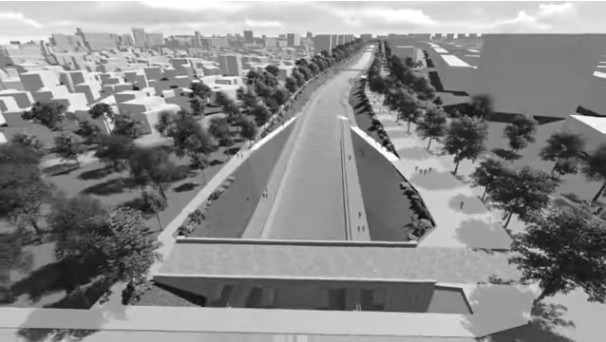
A micro-hydropower plant, as the name suggests, is a hydrotechnical structure equipped with a synchronous motor, installed on the course of a river or stream. The flowing water powers the motor, which generates electricity.
Returning to the project of the dam with a micro-hydropower plant on the Bahlui River, it was never completed. This was due to a lack of local budget funds or because the project was not financed by the European Commission.
How well-conceived and useful was this investment? Well, this summer, due to drought in Moldova, the river literally dried up, as announced by Apele Române (Romanian Waters).
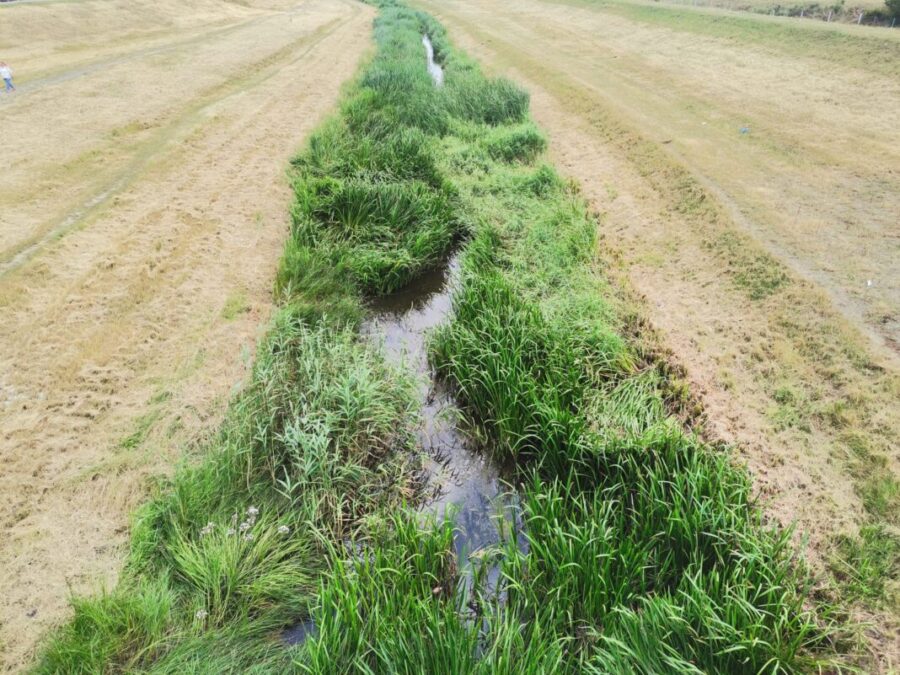
The Bahlui River, which was supposed to become a Seine of Iași, dried up this summer, and in some sections, it had a flow of no more than one meter. Photo source: Salut Iași
Romanian Waters also communicated on August 26 that the Sabar River (Poenari hydrometric station) – from the Argeș-Vedea hydrological basin – had completely dried up. There is also a micro-hydropower plant in the Sabar River basin. This plant was built back in the 1980s, during the communist period.
Let’s talk about MHCs
This is because the first micro-hydropower plants (MHCs) appeared in Romania as early as the last century. Most of them were built in the 1980s. The oldest one is in Suseni, Gorj County, and is over a century old.
„Actually, these micro-hydropower plants were originally called hydropower plants. With the development of technology and the construction of impressive dams like the Iron Gates or Vidraru, these hydrotechnical works were downgraded to the status of micro,” explains Sergiu Pântinea, a former hydrotechnical engineer, now retired.
They are called micro-hydropower plants because they have a small production capacity, up to 10 MW.
By the time of the 1989 revolution, Romania had almost 50 micro-hydropower plants. All of them were transferred to Hidroelectrica’s management. The state company sold some of them, especially during its insolvency period (2013-2017), because they were not profitable.
„They were structures that required maintenance, and their energy production was very low,” says Remus Borsa, special administrator of Hidroelectrica during the insolvency period.
„In fact, the energy produced by any micro-hydropower plant in Romania wouldn’t be enough to meet the needs of a village with 100 homes,” adds engineer Sergiu Pântinea.
And yet, the number of MHCs increased after Romania’s EU accession
However, with Romania’s accession to the European Union (in 2007) and Europe’s growing appetite for green energy, the Romanian state chose to subsidize the energy produced by micro-hydropower plants.
“This attracted many investors, due to the subsidies provided through green certificates and the increasingly lower costs for such constructions, as a result of technological development,” explains Dumitru Chisăliță, president of the Intelligent Energy Association.
A micro-hydropower plant now costs, according to approval projects submitted to institutions under the Ministry of Environment, between €100,000 and €2 million.
Subsidizing MHCs
The green certificates offered for energy production through micro-hydropower plants and the relatively low costs have led to Romania having between 400 and 700 such units.
“In Romania, over 430 MHCs are at various stages of planning, authorization, and construction, and more than a quarter of them are located in protected areas or at their boundaries. The construction of approximately 300 such MHCs has already been approved without any pre-planning at the river basin or regional level,” representatives of the environmental organization WWF estimated two years ago.
In addition to this, there are almost 300 more projects, according to a PRESShub investigation, that have not yet reached the approval stage at institutions under the Ministry of Environment.
The Green Certificates Stake
In 2008, the Romanian state approved the support scheme for the allocation of green certificates. This refers to Law no. 220 of October 27, 2008.
Under this legislation, each MWh produced by a micro-hydropower plant received 3 green certificates. These green certificates were purchased, as required by law, by producers and consumers of environmentally harmful energy, generated from the burning of fossil fuels.
Specifically, on the green certificate market, companies such as Complexul Energetic Oltenia or the steel plant in Galați purchased these green certificates from MHCs. Green certificates are also received by producers of photovoltaic and wind energy.
The trading prices of green certificates between 2011 and 2014 fluctuated between €5 and €20 per certificate. The money for these subsidies granted through green certificates primarily comes from the population.
Case Study: How profitable is a MWh produced by an MHC
Thus, if a micro-hydropower plant has a power output of 2 MWh, the unit should produce 48 megawatts each day.
In September 2024, the average price of electricity on Romania’s spot market was 544 lei/MWh. This means that the example micro-hydropower plant would earn 26,122 lei in a single „working” day from the sale of electricity.
To this amount, green certificate subsidies are added. The average trading price of a green certificate in September was €29 (125 lei), according to OPCOM.
This means that each MWh is subsidized with 330 lei (2.3 green certificates). In one day, the plant would earn an additional 15,840 lei from green certificates.
In total, after one „working” day of a 2 MWh micro-hydropower plant, it would generate revenues of 41,952 lei (approximately €8,000). Over a year, the revenues would exceed €3.06 million.
Of course, the most profitable micro-hydropower plants operate at full capacity for only 50% of the year, as activity is stopped during droughts or when the water is frozen.
The infringement
The substantial revenues generated by MHCs have led to the construction of such plants in protected areas, such as the Făgăraș Mountains.
On June 3, 2015, the European Commission initiated infringement proceedings against Romania for failing to comply with the protection rules for rivers and protected areas in the case of 17 micro-hydropower plants in Romania.
Among these projects are four micro-hydropower plants in the Făgăraș Mountains, located on the Dejani stream and the Vistișoara River, which have negatively impacted the environment, particularly the “Natura 2000” habitat.
One of the companies mentioned in the European Commission’s report had, at that time, Ilie Sârbu, the former Minister of Agriculture, as a shareholder.
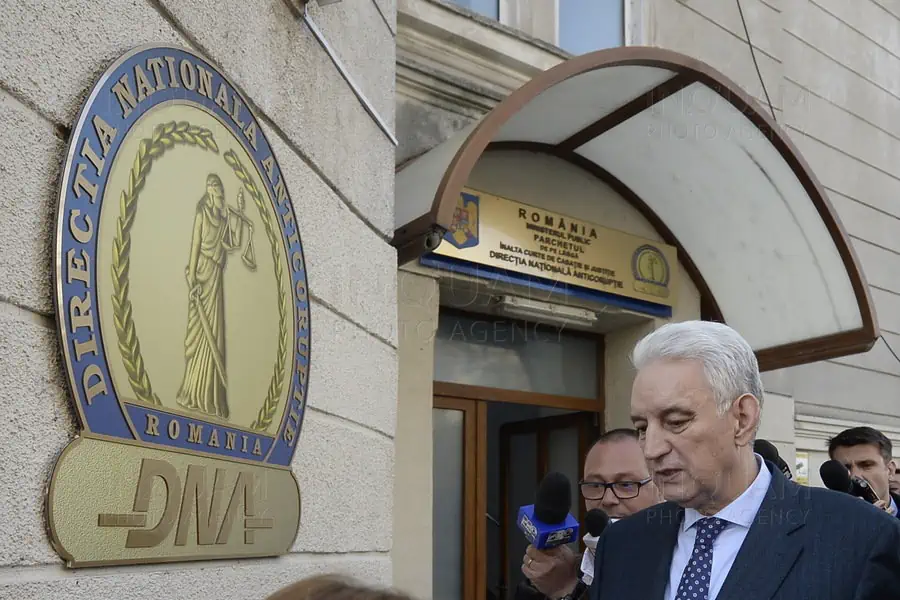
Former Senator Ilie Sârbu leaves the DNA headquarters on Monday, October 26, 2016, in Bucharest. Ilie Sârbu was heard by DNA prosecutors as a witness in the case of Ioan Niculae
It concerns a micro-hydropower plant located in the commune of Recea (Brașov County) on the Dejani stream and its tributary, Lupșa. The project belonged to the company Elcata MHC SRL from Ghimbav. Ilie Sârbu’s involvement also appears in his declaration of interests.
Political connections
Ilie Sârbu, the father-in-law of former Prime Minister Victor Ponta, became a shareholder in Elcata MHC SRL Ghimbav in 2010, according to data published in the Official Gazette, no. 3917/2010. Ilie Sârbu held 5% of the company’s share capital. The shares were also mentioned in the PSD leader’s wealth declaration.
After the infringement procedure was initiated, Ilie Sârbu exited the shareholder structure. The current shareholders of Elcata are Dănuț Frunza (86%) and Catarig Gheorghe (14%). Ilie Sârbu declined to comment on the matter. The company has initiated several projects to build micro-hydropower plants on the Sebeș, Pojorta, Brescioara, and Berivoi rivers, as well as the Dejani stream.
As for the Dejani energy facility, it was built with 9.15 million lei from European funds (from the European Fund for Sustainable Development), supplemented by an additional 1.25 million lei from the state budget. In total, nearly 10.4 million lei (approximately €2.25 million at the current exchange rate) was received. Both sources of funding were non-repayable.
The Dejani micro-hydropower plant was already connected to the national electricity distribution system in 2013 through contract C6497 with FDEE-Electrica Distribuție Transilvania-Sud, at the LEA 20 kV Hârșeni 1 station. The facility’s power is 2.440 MW, although the capacity approved by the authorities was slightly lower, at 2.280 MW.
Additionally, in the Făgăraș Mountains, three other similar projects were completed. Two belong to the company Hidro Clear Sibiu, while the third is owned by Hidro Este Bucharest.
Taia micro-hydropower plant
Another controversial project is the one at Taia. Among the 17 projects targeted by the infringement procedure in 2015 is the Taia micro-hydropower plant, according to representatives of Bankwatch Romania.
The investment was made by Hidro Clear SRL from Sibiu. The project was not completed in 2011 and was only put into operation in 2017. The installed capacity of the Taia MHC is small, at just 3.78 MW.
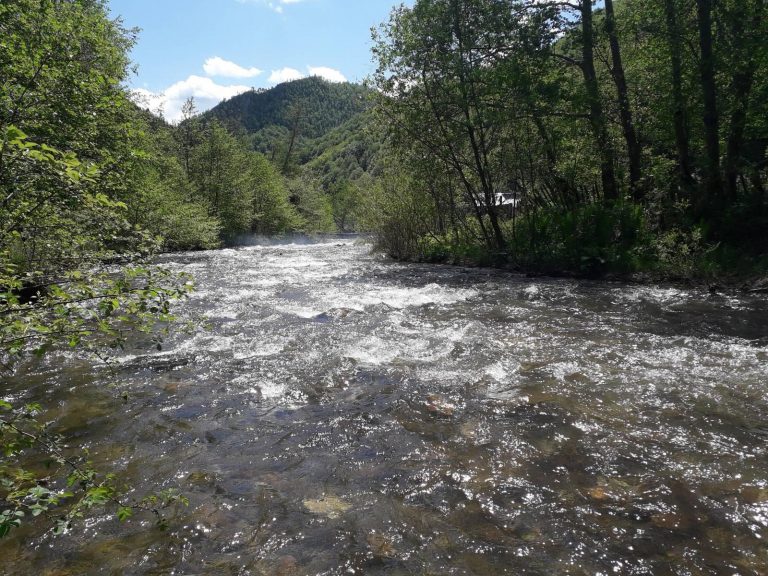
Taia River
In 2008, Hidro Clear SRL obtained from the administration of the city of Petrila (Hunedoara), through a public-private partnership, a 400 square meter plot of land necessary for the construction of a micro-hydropower plant (MHC).
To operate the micro-hydropower plant, it was proposed to capture water from two sources: the Valea Popii and Aușelu rivers, which were to be routed through a buried pipeline over a length of 7.5 kilometers.
Hidro Clear SRL had two Italian co-investor companies that also have other investments in hydropower in Romania. These companies are Etea Rinnovabili SRL and Clear Energy SRL. The Taia MHC was eventually built and put into operation, operating illegally until 2017, when a Romanian court annulled the environmental authorization and the decision from the approval stage.
However, in 2022, Clear Energy obtained a new reauthorization from APM Hunedoara, allowing it to continue operating.
This sparked protests from the Bankwatch Romania organization, which claims that the micro-hydropower plant is located in a protected area.
„An environmental impact assessment of the Taia hydropower plant was never carried out, and practically its construction and operation are leading to the destruction of a protected natural area and the Taia River, along with the entire ecosystem it supports; the disappearance of the stone crayfish (a priority species) from the Taia River’s habitat, with the river basin being at the edge of the species’ range,” says Bankwatch Romania.
Energy Holding SRL
The company completed the following projects: MHC Cepari, MHC Salatrucu de Jos, MHC Salatrucu de Sus, MHC Suici, MHC Vadu Frumos.
The company is bankrupt, with debts to ANAF. The company is managed by an offshore entity in Cyprus that owns 100%, namely Energy Holding Cyprus Limited.
Energy Holding was one of the most important traders and suppliers of electricity in Romania until a few years ago, with annual business worth several hundred million lei.
It was one of the main beneficiaries of advantageous electricity purchase contracts from the state-controlled hydropower producer Hidroelectrica, until the latter entered insolvency in 2012. Energy Holding went bankrupt after the court rejected the company’s reorganization plan, according to Profit.
Bogdan Buzăianu founded Energy Holding in 2000. Energy Holding filed for insolvency in May 2017, a few months after losing a lawsuit in which it was seeking €250 million in damages from Hidroelectrica.
Luxten Lightning Company SA
It developed the following projects: CEF Luxten, CHEMP Negras 1, CHEMP Negras 2, CHEMP Prislop, CHEMP Tesila 1, CHEMP Tesila 2, CHEMP Traisteni 1, Doftana River, Prahova County, CHEMP Traisteni 2 HA1, CHEMP Traisteni 2 HA2.
The shareholders are Nicolae Claudiu Rădulescu (63%), Monica-Maria Bucur (17%), Silvian Șerbanescu (14%), and other legal entities (4%).
Luxten Lighting Company SA belongs to businessmen close to former President Traian Băsescu. His daughter, Elena Băsescu, worked for Luxten for a period of time. Claudiu Rădulescu and Ionel Pepenică are considered the “right-hand men” of former PSD Minister of Industry Dan Ioan Popescu. The company was founded in 1993 by former Securitate (secret police) officer Boszormeny Zoltan, who bought the Electrofar lightbulb factory from the state. Boszormeny left the company’s shareholder structure in 2003, according to Gazeta de Cluj.
Elsid SA
The company built nearly 30 micro-hydropower plants.
The company’s shareholding structure consists of Vektor Elements SRL, which owns 99.8%, with the remaining 0.2% held by other shareholders.
Vektor Elements is owned by Doru Trăilă & Asociații SCA, as trustee of the social shares held by associate Emil-Mihai Tufan, for a period of 7 years starting from February 15, 2023.
Mihai Emil Tufan—former partner of Andreea Marin, and ranked among the Top 50 wealthiest Romanians five years ago, with an estimated fortune of €100 million—ceded the management of his shares and assets in the companies Electrocarbon, Elsid, and Vektor Elements to lawyer Doru Trăilă for a period of 7 years. This decision was made „as a result of changing life priorities, with plans to dedicate himself to family life, charitable activities, and supporting innovation and research for the sustainable development of sectors of society that interest him,” according to a February report by G4Media.
The February contract gained relevance again, being targeted by the DNA (National Anticorruption Directorate) in an investigation concerning the alleged „judicial optimization” by the trio of Florian Coldea (retired general and former deputy director of SRI), Dumitru Dumbravă (retired general and former head of the Legal Directorate of SRI), and Doru Trăilă in the attempted murder case of Tufan, according to sources close to the investigation cited by G4media.ro.
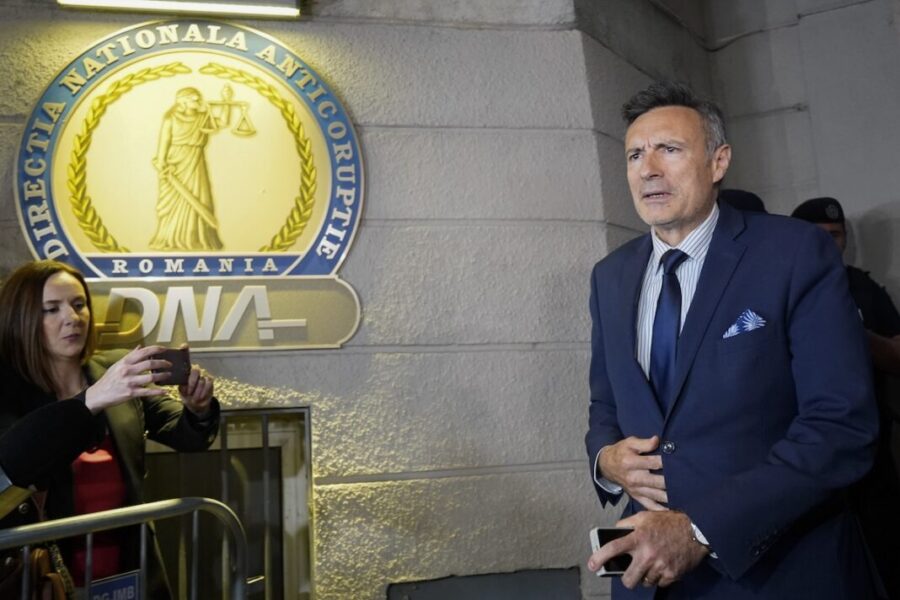
DNA: Coldea și Dumbravă sunt interesați de consiliere în dosarele lui Alexander Adamescu și Emil Tufan. Foto Inquam Photos/ Saul Pop
Neptun SA
It developed the Muscel MHC.
The majority shareholder is Metaleuroest SRL (95%). The administrators are Ion Dragomir, Elena Ștefan, and Florian Visa.
In 2015, Metaleuroest was equally owned by Mihai Anastasescu and Mihai Emil Tufan, businessmen from Câmpina who were listed among Romania’s millionaires. Anastasescu is one of the shareholders of Elsid Titu, where he holds shares, and he has business interests in construction, trade, and energy.
Anastasescu is linked to the Coldea-Dumbravă scandal. According to Aleph News, prosecutors allegedly discovered transactions between companies in the case related to the construction sector (Soceram/businessman Mihai Anastasescu), the energy sector (Elsid/millionaire Mihai Tufan, convicted for attempted murder), and companies controlled by Alexander Bogdan Adamescu.
Uzinsider General Contractor SA
It developed 10 micro-hydropower projects: CHEMP – ZETEA (HA-1; HA-2), CHEMP Cincis, CHEMP Mihoiesti (HA-1, HA-2), CHEMP Mihoiesti – Regularization, CHEMP Zetea (HA-3), MHC – FIRIZA – BERDU, UHE I Baraj Stramtori, UHE II Nod de Presiune Ferneziu.
The company’s shareholders are Emanuel Babici (37%), Constantin Savu (37%), Uzinsider SA (20%), Florea Rontea (2.4%), Andrei-Ioan Munciulescu (1.5%), and Albes Ana-Maria (1.4%).
Emanuel Babici is a Romanian politician, former deputy minister, and state secretary of the Ministry of Industry. He was the general director of the Heavy Machinery Enterprise in Bucharest, the general director of the Industrial Center for Energy, Metallurgical, and Lifting Equipment in Bucharest, deputy minister and state secretary at the Ministry of Industry, and the executive director of the Uzinsider S.A. group in Bucharest, which also includes Comelf S.A. in Bistrița.
Sobis Solutions SA
It developed the Albota MHC in the locality of Albota, near Pitești.
The sole associate and administrator is Muller Hans Martin.
He is a local PNL (National Liberal Party) councilor in the locality of Arpașu de Jos. His company received 6 million lei through PNRR (National Recovery and Resilience Plan) to digitize the Nicolae Bălcescu Land Forces Academy in Sibiu.
In the past, the company built the PNL Sibiu website, and its owner also owns one of President Iohannis’ favorite restaurants.
Between 2008 and 2012, Muller’s company signed five contracts worth 300,000 lei with Cisnădie City Hall. A report by the National Integrity Agency (ANI) found that during the period in which these contracts were signed, one of the company’s administrators, Gheorghe Silvian Șorici, also held the position of local councilor. ANI determined that this placed him in a conflict of interest, according to Context.
During the time the contracts were signed with Cisnădie City Hall, which created the conflict of interest for Șorici, Sobis Solutions was associated with Gheorghe Huja, then vice mayor of Cisnădie, in another company—Natur Design W&K SRL. Huja, who is currently the mayor of the city, left the company in 2009.
A company related to Sobis obtained part of an 8.5 million lei contract with the Presidential Administration. Sobis held 50% of the company’s shares.
„Infographic with the most important micro-hydropower plants, their locations, the companies that own them, and the shareholders. The points of the MHCs on the Google map are indicative.”
Projects on dried-up waters
It is certain that Romania’s water resources are diminishing, as all specialized institutions have observed.
In July, Environment Minister Mircea Fechet stated that Romania is affected every year by floods and drought, or a combination of these extreme phenomena. According to him, all long-term forecasts indicate that the eastern and southern parts of the country will face a 20% decrease in available water resources.
“The negative impact of micro-hydropower plants also extends to local communities, by affecting groundwater levels and, consequently, water sources. Experts say that, due to the increasing and diversifying pressures on the limited resources of flowing water, by 2030 the water supply capacity will decrease by up to 40% compared to the current level,” WWF Romania told us.
According to reports from the National Meteorological Administration and other institutions, “Romania is in a severe hydrological crisis, and the impact on river basins from such projects in protected natural areas only worsens the situation.”
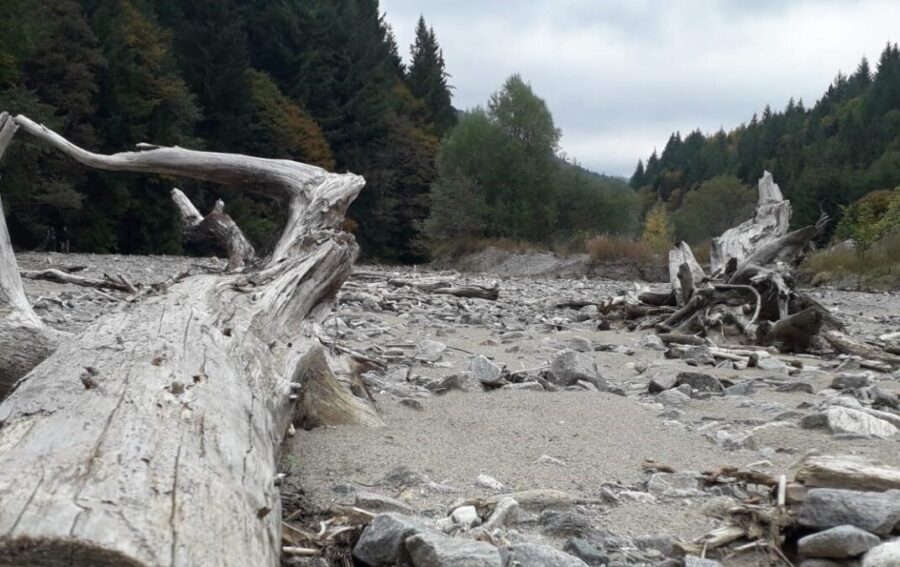
Răstolița
Representatives of Bankwatch Romania also believe that the Răstolița hydropower project will lead to the complete destruction of the river of the same name. Upstream of the dam, its course would be replaced by a reservoir, while downstream it would dry up.
The project involves the separate diversion of several watercourses: Ilva Mare, Valea Bradului, Donca, Bistra, Gălăoaia Mică, Gălăoaia Mare, and Vișa (some of which would be left without a minimum service flow).
“The Răstolița hydropower project negatively affects the ecological status of at least ten water bodies, eight of which will be severely damaged, violating, among other things, the principle of non-deterioration established by the Water Framework Directive (WFD),” states a study signed by members of WWF, Agent Green, and Bankwatch.
Hidroelectrica’s Projects
It’s not only the private sector that is interested in investing in micro-hydropower plants; Hidroelectrica, the state-owned company through the Ministry of Energy (holding 80% of the shares), is also involved.
Based on an emergency ordinance from 2022, Hidroelectrica has been granted the right to continue 9 micro-hydropower investments, despite environmental regulations in Natura 2000 protected areas.
These are investments, some of which began during Ceaușescu’s time, that were legally halted between 2007 (when Natura 2000 protected areas were established) and 2015, when the infringement procedure started.
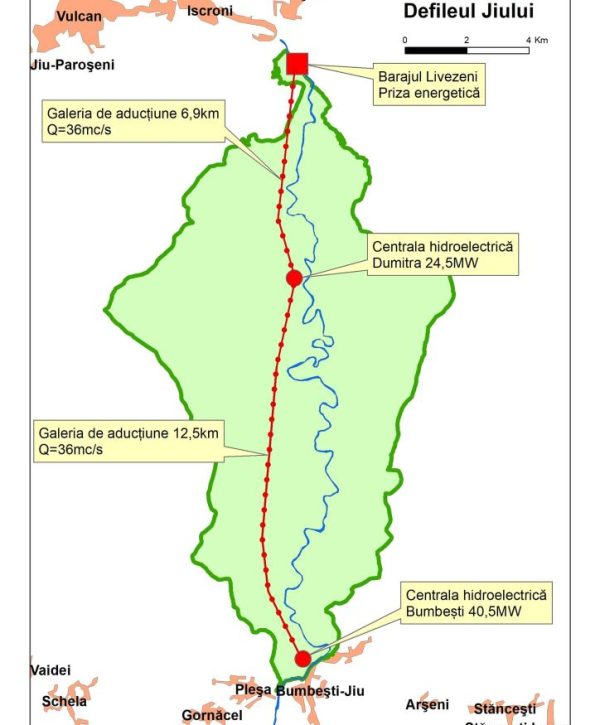
The list of the nine hydropower projects from Emergency Ordinance 175/2022 (all projects belong to Hidroelectrica):
- The development of hydropower on the Jiu River, on the Livezeni-Bumbești sector. (Jiului Gorge National Park and the Natura 2000 site ROSCI0063 Jiului Gorge)
- The development of hydropower on the Olt River Gorge, on the Cornetu-Avrig sector. (Natura 2000 site Frumoasa ROSCI0085)
- The development of hydropower at Pașcani on the Siret River. (Natura 2000 site between Pașcani and Roman ROSCI0378)
- The development of hydropower at Răstolița. The project is located in the Natura 2000 site Călimani Gurghiu (ROSCI0019) and the Natura 2000 site Upper Mureș Gorge (ROSPA0030).
- The development of hydropower at Surduc-Siriu. It is located in the Natura 2000 site Penteleu (ROSCI0190).
- The development of hydropower on the Siret River, on the Cosmești-Movileni sector. The project is located in two Natura 2000 sites along the Lower Siret Valley (ROSCI0162 and ROSPA0071).
- The Cerna-Motru-Tismana hydrotechnical and energy complex, stage II. It is located in the Natura 2000 site Western Gorj (ROSCI0129).
- The development of hydropower on the Olt River, on the Izbiceni-Danube sector. (Natura 2000 site Lower Olt Valley ROSPA0106)
- The development of hydropower at Cerna Belareca. (Natura 2000 site Domogled-Valea Cernei ROSCI0069)
“These projects are no longer viable in 2023. They are investments planned during Nicolae Ceaușescu’s era, which no longer reflect current realities. Some rivers no longer have the same water flow they had 40 years ago. Some are now just a trickle of water,” says Ioana Ciută, a representative of Bankwatch Romania.
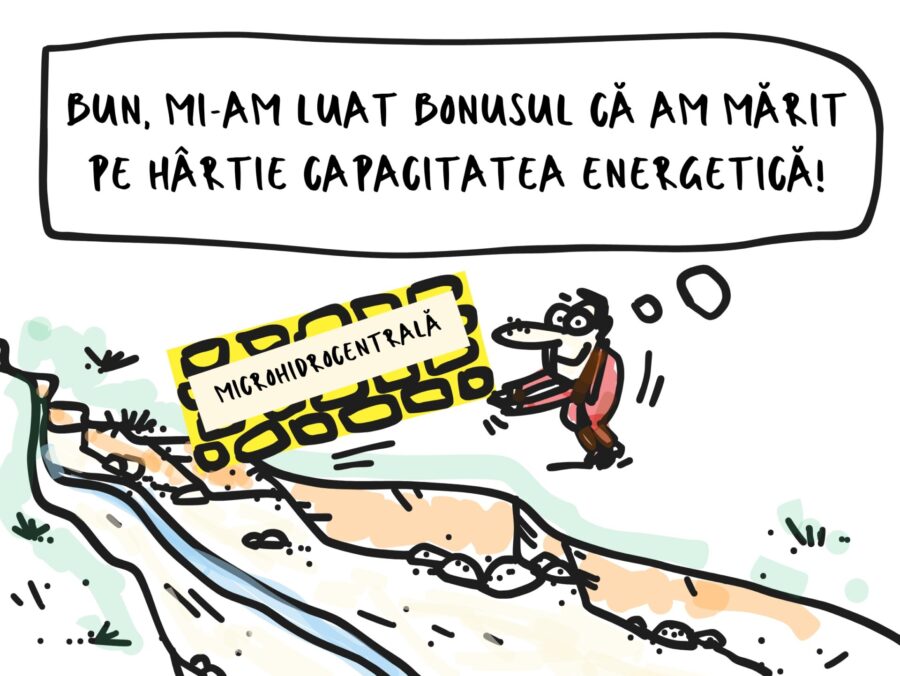
The stakes of the state-owned company’s projects
However, according to environmental organizations, the state-owned company’s primary focus is not the actual production of energy. The company’s leadership is seeking to artificially increase its production in order for the Ministry of Energy to unlock €1.4 billion in funding from the National Recovery and Resilience Plan (PNRR). These funds are intended for green energy investments. “The government has failed to create credible projects to attract funds for energy investments. It is trying to convince the European Commission that Romania will transition from hydrocarbon-based energy to green energy through Hidroelectrica’s projects,” former MEP Dragoș Pîslaru told us.
Additionally, Hidroelectrica committed, through its 2023 investment plan, to increasing its capacity, aiming to generate over 2 TWh of additional energy.
Hidroelectrica’s current production capacity is 17 TWh, of which only 15 TWh is successfully produced annually. This is according to the company’s annual reports from the past three years.
“Hidroelectrica is constantly making efforts to limit the negative environmental impact that could be caused by the projects it is developing,” company representatives explained to us in a response.
General economic uselessness vs. the punctual profit of certain businesses
In 2023, Romania consumed 56.6 TWh of electricity. According to the Ministry of Energy, the total installed (theoretical) capacity of all micro-hydropower plants in Romania is 0.8 TWh. In reality, these MHCs have never produced more than 0.3% of the country’s energy needs. This means 0.2 TWh, according to Transelectrica data.
In fact, all the energy from the hundreds of MHCs located on rivers and streams in Romania is less than that produced by the country’s largest photovoltaic park. For example, in 2023, a photovoltaic park was inaugurated in Rătești, Argeș County, covering 170 hectares. The investment amounted to €100 million. The park is equipped with 135,000 panels, with a total installed capacity of 155 megawatts. With an installed capacity of 155 megawatts and operating when the sun is strongest, the unit in Argeș produces 0.4 TWh/year.
Theoretically, MHCs should primarily benefit local communities. “The greatest value of MHCs is their local value. They boost the area, give locals jobs, and the investor, through the project specifications, is required to help people. To raise their standard of living a little. To sell electricity directly to them,” explains sociologist Ioana Petrescu.
However, the reality is different. “You might wonder how much of the energy our country consumes could be produced by the few hundred (500-800?) micro-hydropower plants? Maybe around 0.1%? They won’t produce a large amount of energy. This is because, for a significant part of the year, these waters in the Carpathians are frozen. In summer, there are long drought periods when the stream barely flows,” she concludes.
